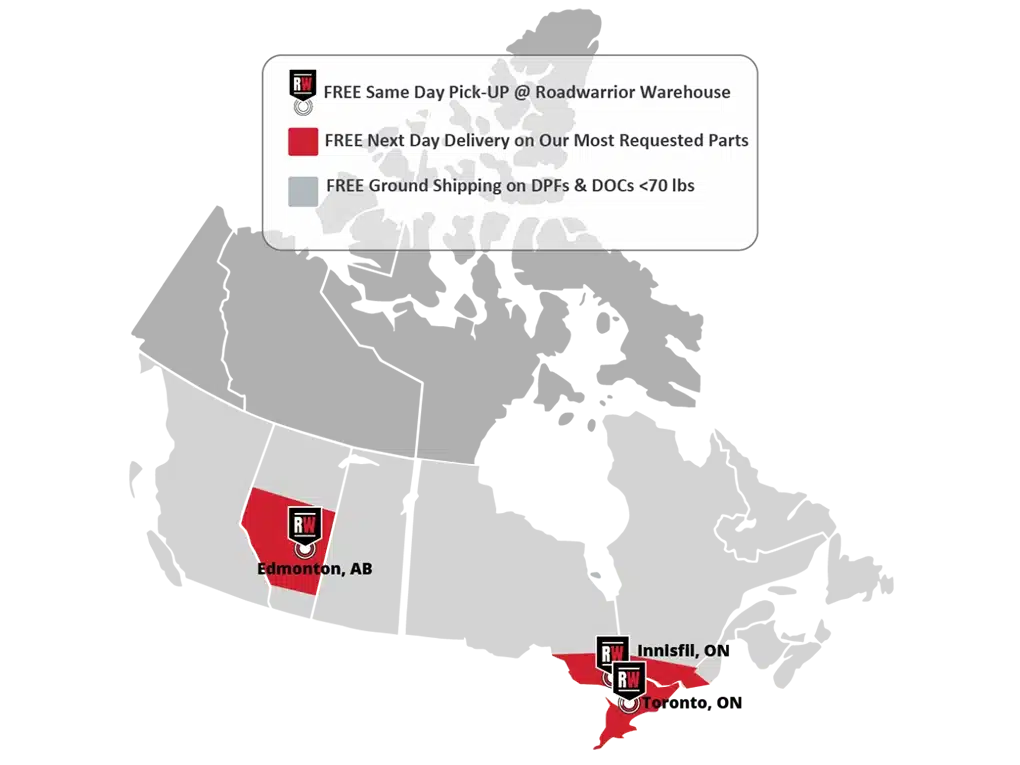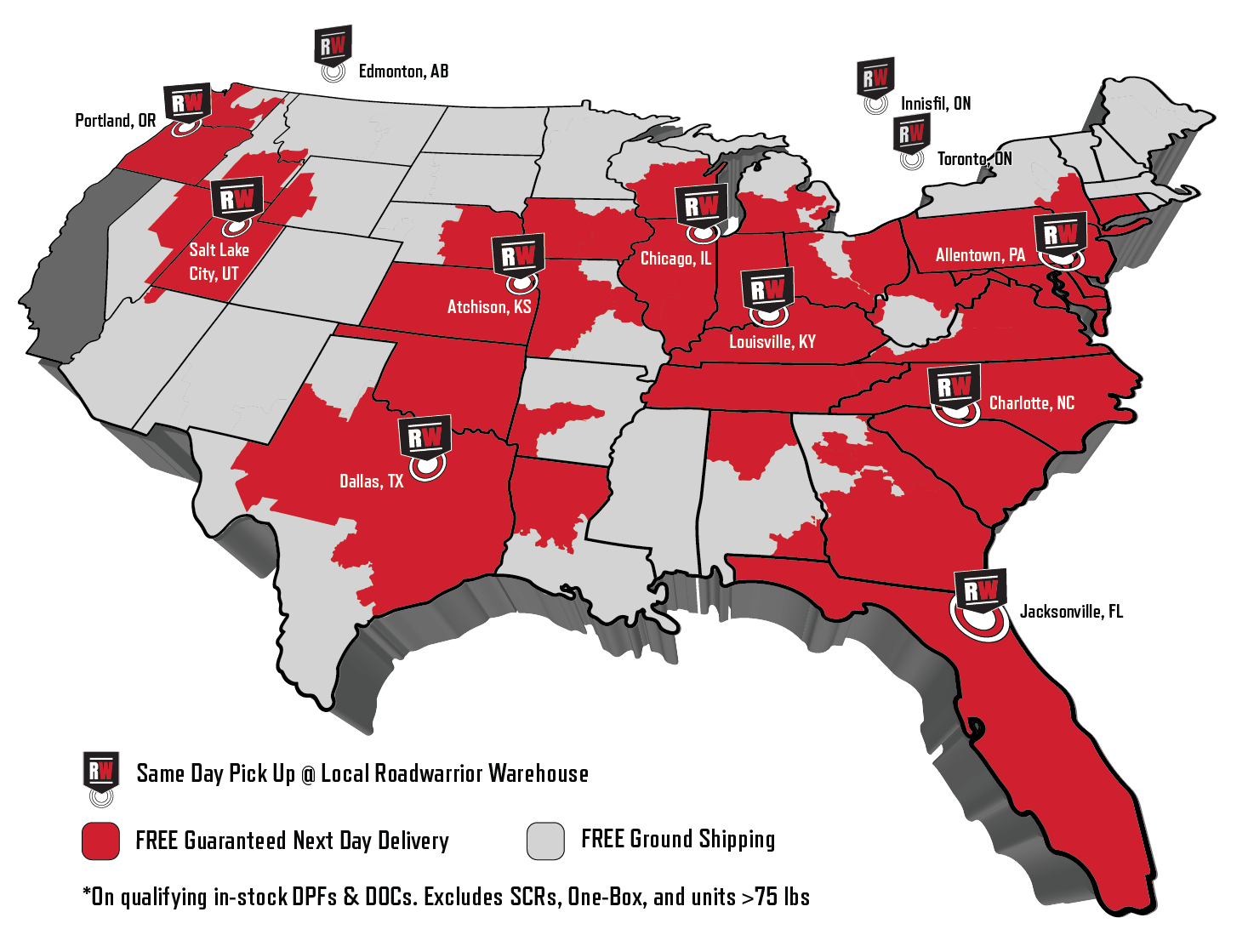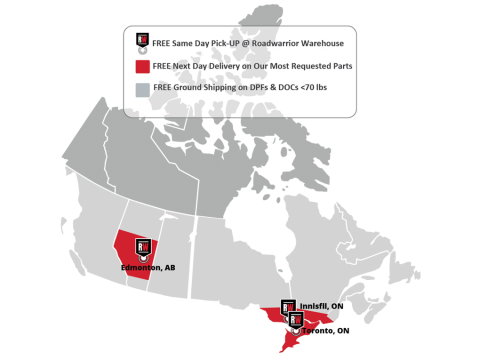If You See Smoke: Say Something!
Apart from the faint white exhaust smoke that comes from the tailpipe in cold temperatures, you should not see smoke of any colour from a post-2007 diesel engine. Your DOC, DPF and, depending on your truck model, your SCR system, filter your exhaust stream. The aftertreatment system removes toxic matter like soot, particulate matter, and NOx before the exhaust pipe releases the gas into the air.
Visible tailpipe smoke is a sign that your aftertreatment system isn’t doing its job. This is often due to underlying upstream issues or leaks. You can normally avoid big, expensive issues by locating and solving the problem quickly. These can range from damaging your aftertreatment system to sending your truck into limp mode, to risking derating your engine.
You can repair issues more quickly once you’ve identified them, and the colour of your exhaust smoke is very indicative. The most common colours are white, black, and blue exhaust smoke. Read on to find out which issues they usually indicate and the most common causes behind them!
What is Black Exhaust Smoke?
The tailpipe from a diesel truck should be clean, with no smoke or sooty residue. Black exhaust smoke is a sure sign that your aftertreatment system, and potentially also your engine, is malfunctioning. This is the most common colour of exhaust smoke.
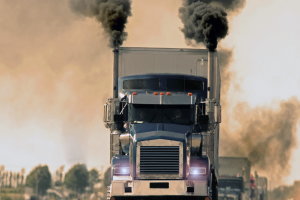
Black exhaust smoke indicates that your combustion cylinder is only partially combusting diesel before it passes on through the system. This usually happens when the engine is burning over-rich fuel, either due to excess fuel, or restricted airflow. The most common initial side-effects are increased emissions and reduced fuel economy. If this is left untreated, over time it will overload the DPF filter with soot-rich exhaust. As a result, the DPF can become clogged and eventually crack.
Several issues cause the engine to burn over-rich fuel or fail to fully burn fuel in its combustion cylinders.
Fuel injector issues
Clogged fuel injectors limit the fuel reaching the combustion chamber, restricting the engine’s power. Damaged fuel injector valves and nozzles on the other hand cause too much fuel to flow into the combustion chamber. This disrupts the air-fuel balance, reducing fuel efficiency, and overloading the DPF filter with soot.
Exhaust gas recirculation Failure
The EGR valve regulates emissions by returning a small amount of exhaust gas to the combustion cylinder. This then lowers combustion temperatures and reduces NOx emissions. A broken EGR allows too much exhaust gas into the combustion chamber. This can cause excessive black exhaust smoke, reduced fuel economy and rough idling.
Faulty turbo
Turbochargers use the exhaust gas to drive a turbine which pushes compressed air back into the combustion cylinder. A faulty turbo can restrict the airflow into the cylinder, which prevents the fuel from burning properly. As a result, the driver will experience reduced fuel economy and soot-rich exhaust.
Dirty air filters
Clogged or dirty air filters restrict the flow of clean air into the engine. This can result in reduced gas mileage and limited performance from the turbocharger and aftertreatment system.
What is White Exhaust Smoke?
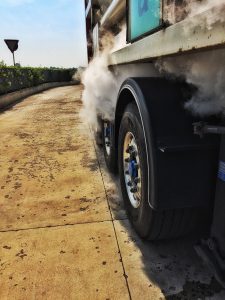
White exhaust smoke from the tailpipe usually means raw diesel is passing through the combustion chamber into your exhaust stream. This happens when the engine’s combustion cylinders aren’t hot enough to burn the diesel.
There are a few frequently seen reasons for this. If defective fuel injectors introduce diesel into the cylinders at the wrong time and in the wrong quantities, raw or partially burnt diesel may leave the cylinders. As a result, raw fuel can progress through the exhaust system.
Defective fuel injectors are frequently caused by a bad injector pump or worn timing gear. Reduced cylinder compression, due to compromised values or a sticking piston ring, can also let raw diesel enter the exhaust.
White exhaust smoke can also be a symptom of a few more serious issues, which require significant downtime and more expensive repairs. A coolant leak can drive the fluid through the cylinder and turbo, flooding the DPF and risking hydrocarbon poisoning. If this happens, the DPF and other elements of the aftertreatment system may need to be replaced.
Faulty head gaskets can cause exhaust smoke by failing to seal the combustion cylinders, allowing gases or fluids to leak in or out. You will also see white exhaust smoke if a cracked cylinder head is leaking water into your diesel and combustion cylinders. Whatever the cause, if you see white smoke coming from your tailpipe, it’s important to take your truck for repairs!
What is Blue Exhaust Smoke?
Blue exhaust smoke is generally a sign that engine oil is passing through your exhaust to your aftertreatment system. Another warning sign is a sharp increase in your engine’s oil usage, forcing you to change your oil prematurely.
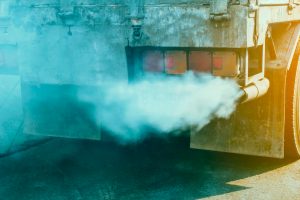
Leaking oil can have serious knock-on effects if the issue isn’t fixed quickly. Old and worn valve seals, breaks in your cylinder or piston rings, and leaking turbo seals are often behind oil leaks; a change in oil grade, or a fuel leak thinning your oil are also common causes. If you see blue smoke, compression test your engine and troubleshoot for underlying issues.
If engine oil, coolant, or fuel floods your aftertreatment system, at least one component will likely be contaminated. As a result, you will need to take your truck for repairs or even replace the contaminated part, which can be time-consuming. To avoid this, watch out for tailpipe smoke and get your truck checked over if you see any!
If your aftertreatment system does need replacing, cut down on downtime by asking your dealer about Roadwarrior! Our high-quality, replacement emissions control parts can normally be shipped to your site in 1-2 days, and our most popular parts are available for same-day pickup.

